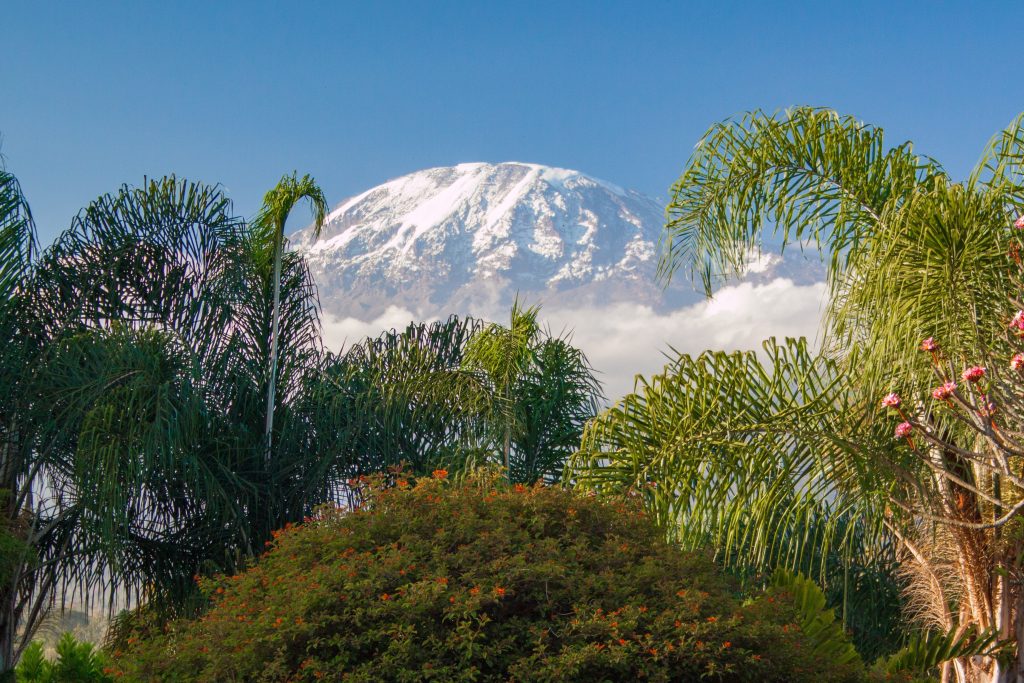
About Kiliman jaro National Park
Kilimanjaro National Park, a Tanzanian national treasure, encompasses the majestic Mount Kilimanjaro, Africa’s highest peak. Established in 1973, the park was designated a UNESCO World Heritage Site in 1987, recognizing its significant natural beauty and biodiversity. Spanning over 1,688 square kilometers, the park includes the entire mountain above the tree line and the surrounding montane forest belt above 1,820 meters. This elevation gradient allows for a fascinating variety of ecosystems, from lush rainforests to alpine deserts, culminating in the icy summit. The park is not only a haven for climbers and adventurers but also for a diverse array of wildlife. Above the timberline, species such as the Kilimanjaro tree hyrax and the grey duiker can be found, while the montane forests are home to elephants, Cape buffaloes, and leopards. The park’s administration falls under the Tanzania National Parks Authority, which oversees its conservation efforts and the sustainable tourism that contributes significantly to the region’s economy. Kilimanjaro National Park is a symbol of natural wonder, not only for Tanzania but for the entire world, representing the awe-inspiring power and beauty of our planet’s wild places.
History:
Kilimanjaro National Park, established in 1973, is a site of profound historical significance. The park encompasses Mount Kilimanjaro, which was declared a game reserve by the German colonial government in the early 20th century and later reclassified as a national park. It was designated a UNESCO World Heritage Site in 1987, recognizing its unique natural beauty and biodiversity.
Location:
Located in Tanzania, near the Kenyan border, Kilimanjaro National Park lies approximately 300 kilometers south of the equator in the Kilimanjaro Region. The park’s headquarters are in Marangu, which is about 86 kilometers from Kilimanjaro International Airport.
Attractions:
The park’s main attraction is Mount Kilimanjaro itself, the highest peak in Africa. Visitors are drawn to its snow-capped summit, Kibo, and the surrounding montane forest belt teeming with diverse wildlife. The park also boasts other volcanic cones such as Mawenzi and Shira.
Activities:
Kilimanjaro National Park offers a range of activities, from wildlife viewing and cultural tours to the ultimate challenge: climbing Mount Kilimanjaro. Hiking tours, safaris, and multi-day treks are popular, with routes like the Marangu and Machame attracting adventurers from around the world.
Accommodation:
Accommodations within the park vary from camping sites to full-service lodges. The Marangu route offers hut accommodations, while climbers on other routes may camp or stay in nearby hotels like the Kilimanjaro Wonders Hotel.
Accessibility:
The park is accessible by road and flight, with the nearest airport being Kilimanjaro International Airport. The park and its trails are well-maintained, making it one of the most accessible high summits in the world for climbers.
Best Time to Visit:
The best time to visit Kilimanjaro National Park is during the dry seasons, from late June to October and from December to February. These months offer the most favorable weather for climbing and wildlife viewing.
Kilimanjaro National Park is not just a destination; it’s an experience that combines natural wonder with cultural richness. Whether you’re gazing at the star-studded sky from the slopes of Kibo or listening to the stories of the Chagga people, a visit to this majestic park is an unforgettable journey.
For more detailed information on planning your visit, check out the official park website or consult travel guides dedicated to Kilimanjaro National Park. Embark on your adventure to the Roof of Africa, where the land touches the sky, and the spirit of exploration thrives.
